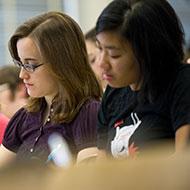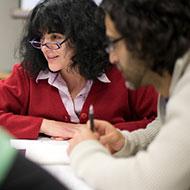Note: The combination of a Course designation and number may not exceed six characters, excluding the decimal point.
17.1
The character(s) before the decimal indicate(s) the Course or catalog designation.
17.2
In general, each department or program may develop its own numbering system. However, departments are expected to use either two or three numbers after the decimal point to uniquely identify each permanent subject. The student information system displays the letter J as the last character in a subject number for all cross-listed subjects; the letter cannot be added to a subject number.
The following exceptions have been approved by the CoC:
17.2.1
| Alpha suffixes are permitted for the following types of subjects. | |
|---|---|
|
EPE |
Pre-employment workshop (UPOP series) |
|
EPW |
IAP workshop (UPOP series) |
|
IND |
Undergraduate independent study (Course 12) |
|
THT |
Undergraduate thesis research design / seminar / tutorial / preparation |
|
THU |
Undergraduate thesis |
|
TIP |
Undergraduate thesis or independent study preparation (Course 12) |
|
UAP/URS |
Undergraduate Advanced Project/Research (Course 6) |
|
UAR |
Seminar in Undergraduate Advanced Research (Course 6) |
| UAT | Oral Communication (Course 6) |
|
UR |
P/D/F graded UROP subject |
|
URG |
Letter-graded UROP subject |
17.2.2
For first-year advising seminars administered by the Office of the First Year, the letter A is the first character of the subject’s suffix. (Examples: 15.A03, 21M.A12) The prefix SEM, which had previously been reserved for seminars that are not sponsored by an academic department or program, is discontinued, effective with the 2011-12 academic year.
17.2.3
For special subjects, the first character after the decimal point is the letter S, which must be followed by two or three numbers. (Examples: 4.S399, 21M.S01). For special subjects offered by entities in the Special Programs group (see 17.2.6), the first character after the decimal point is the number associated with the general range; the letter S is the second character after the decimal point. Example: SP.3S50 (Terrascope).
17.2.4
For Common Ground subjects administered by the Schwarzman College of Computing, the letter C is the first character of the subject’s suffix. (Examples: 6.C01, 16.C20). This numbering convention was approved by the CoC in AY 2021-22.
17.2.5
| Letters may be used as the last character of a subject number under the following specific circumstances: | |
|---|---|
|
A, B, C |
Denotes multiple variations of a subject (e.g., 18.100A, 18.100B, 18.100C), a sequence of subjects (e.g., 1.018A, 1.018B), or distinct options within a program (e.g., 2.02A, 2.02B).21 In these situations, letters must be sequential: a B cannot be used unless there is an A; a C cannot be used unless there is also an A and a B. It is also acceptable to add the letter A to a second version of a subject, retaining a standard number for the similar subject. (Examples: 4.021 and 4.10A, 18.310 and 18.310A.) The preferred method of handling these situations is to use sequential numbers (e.g., 7.012, 7.013, 7.014; 8.333, 8.334). |
|
L |
Denotes a "long" version of a permanent subject that extends from one term into another. (Example: 8.01L) |
17.2.6
| Reserved numbers and number ranges within Special Programs: | |
|---|---|
|
SP.100-120 |
Office of Minority Education (Interphase, Seminar XL) |
| SP.200-299 | Office of the Vice Chancellor (discovery-based subjects not related to a particular department or discipline) |
|
SP.35UR, 360 |
Terrascope (optional subjects) |
|
SP.800-801 |
First-Year / Alumni Summer Internship Program |
- 21 Exceptions: Course 2 was allowed to use 2.00A and 2.00B to identify two unrelated subjects because of a shortage of available numbers in the desired number range at the time the subjects were established. Course 18 was allowed to use 18.100P and 18.100Q to identify multiple variations of a subject because of a sequencing issue related to the depth of the subject matter that prevented successive numbering after 18.100A and 18.100B.





